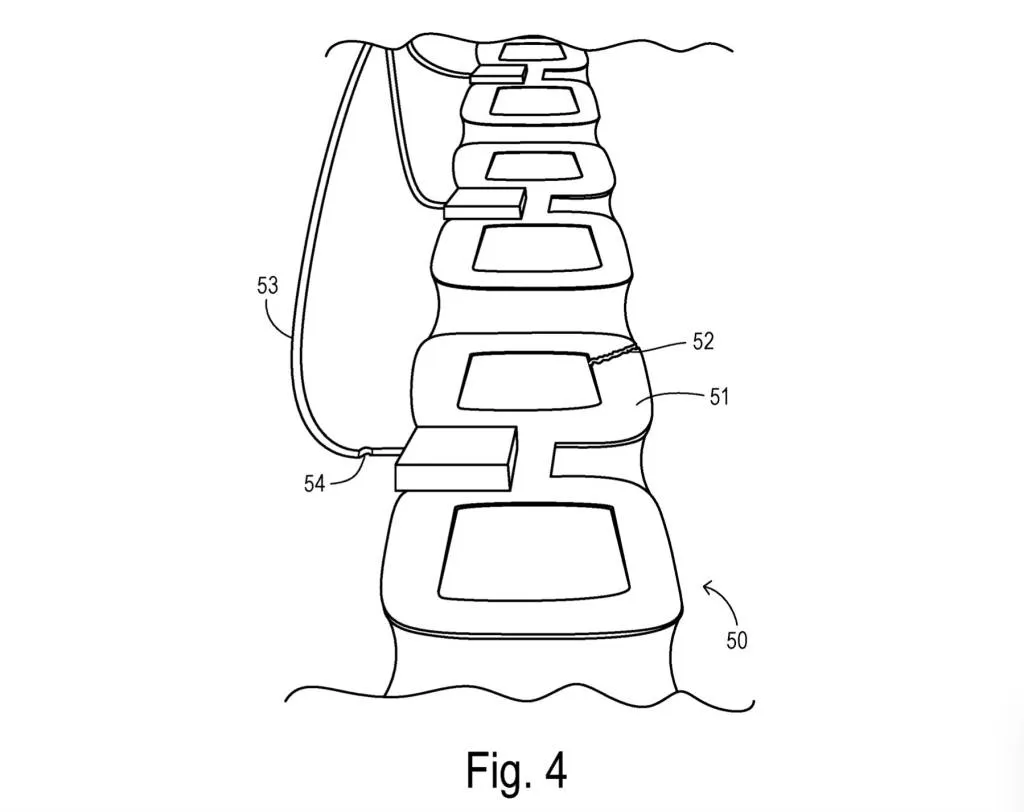Ford is exploring patent technology that could allow EVs to charge while driving, using hardware embedded in the road.
Published by the United States Patent and Trademark Office (USPTO) on July 20, 2023, and originally filed Jan. 20, 2022, a Ford patent application titled “Roadway Charging Coil Alignment and Monitoring” aims to apply wireless inductive charging to vehicles in motion.
Ford in-road wireless EV charging patent image
Wireless inductive charging uses coils mounted in a transmitter (connected to a source of electricity) and a receiver mounted on the vehicle to transmit electricity wirelessly. Some companies have developed wireless-charging systems based on this principle for stationary applications—and Ford has filed a separate patent application for that use.
In this application, though, Ford discusses embedding inductive-charging coils in the road and using them to charge moving vehicles. This requires the receiver on the vehicle to be aligned with a line of coils in the road surface. Ford notes that drivers could maintain alignment by following lane markings, or be guided by a camera or other sensors designed to read lane markings.

Ford in-road wireless EV charging patent image
However, this still leaves room for misalignment of the car and in-road charging coils, which reduces charging efficiency, according to Ford. So the automaker proposes equipping vehicles with ground penetrating radar to home in on the coils. Radar data could then be fed into a control system that would automatically adjust steering for optimal charging.
In-motion wireless charging has been tried before. In 2017, Renault and Qualcomm (which subsequently sold its wireless charging patents to WiTricity) claimed to have charged a car at 60 mph on a test track. In 2020, electric trucks were successfully charged while driving down a short stretch of road in Sweden. If it reaches production, Ford’s radar system might make this type of charging more reliable. However, such a system would also require a large infrastructure investment, and the roads would have to be chosen wisely for greatest impact.
